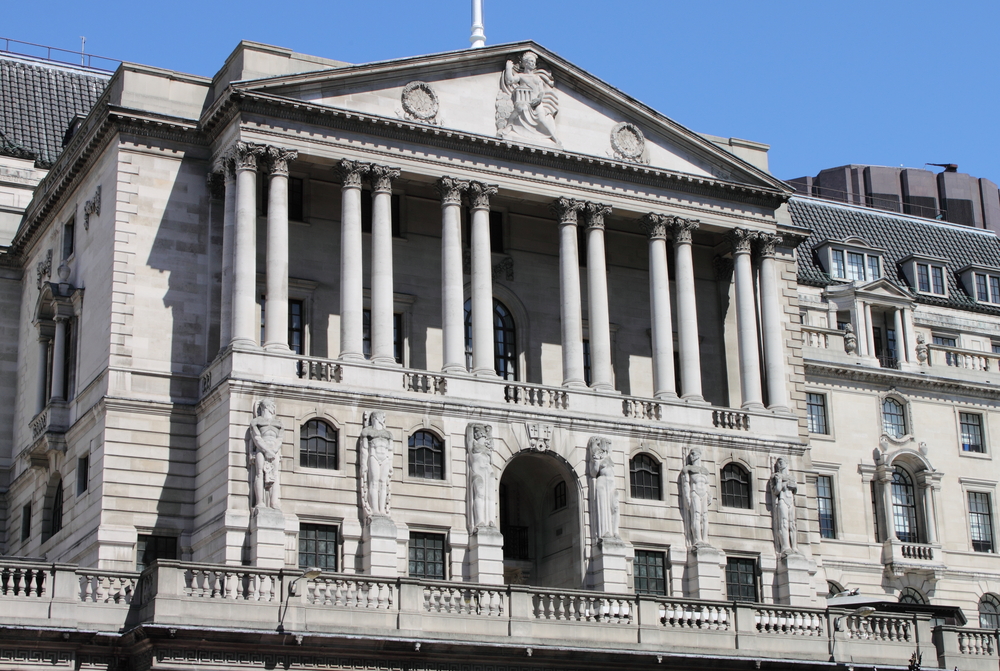Blog
UK interest rates: how low can they go?

The Monetary Policy Committee has slashed interest rates to a record low 0.25% but do they have further to go?
A few weeks have now passed since the Bank of England’s latest attempt at “shock and awe” monetary policy, designed to give Britain the best chance of escaping the worst potential ravages of our landmark decision to leave the European Union. The press and financial commentators have praised Mark Carney for his attempts and markets have overwhelmingly given them a “round of applause”.
The three-pronged rescue package announced by Mark Carney and the Monetary Policy Committee (MPC) undoubtedly surpassed markets’ expectations and included a corporate bond purchase programme earlier than I personally envisaged was possible.
The interest rate cut to 0.25% was unanimously forecast, and the only debate was whether the MPC would act pre-emptively and slash rates to 0.1% or 0%. They decided not to hit even lower interest rates at this meeting, but could well do so in the coming months if data disappoints, and the pre-emptive action they opted for was in the form of the corporate bond purchasing programme, part of a wider resumption of Quantitative Easing (QE). At the same time a “Funding for Lending II” programme was announced, as the Bank of England try even more desperately to get banks to lend to borrowers.
Starting with the bluntest tool announced, the rate cut, there are a few things to think about. Firstly, my best guess is that we are now beyond the equilibrium point where rate cuts are starting to be pointless at best and could well be counterproductive.
I am no mathematician and I do not have an empirical study to hand to back up my (large) gut feel, but I am of the view that rate cuts below 1% start to have a limited or perhaps zero effect on consumers’ habits. I would argue there is no evidence to suggest that rock bottom rates are providing a boost to the spending of debtors, who appear to have spent the post-crisis years repairing their personal balance sheets.
On the flip side, I actually believe we are in a situation where the destroying of savers’ ability to earn a “risk-free” return on their cash is impeding their willingness to spend. Indeed, I was interested in comments from Andrew Haldane of the MPC in a Sunday Times article, where he argued that savers had to be the victims of the MPC’s actions in order to keep unemployment low and the economy growing.
This might sound ridiculous but I believe an interest rate hike might actually have a more powerful effect than their pursuit of ever lower rates. Indeed, I would get really worried if Carney followed Kuroda and Draghi in the Limbo contest of “how low can you go” with interest rates and went into negative territory. Is it possible? I would rule nothing out.
At the same time as the rate cut, the printing presses were cranked up to buy another £60bn of UK gilts (£50bn) and corporate bonds (£10bn). This caught the market off-guard and we have seen yields on all securities directly or indirectly associated with this purchase programme collapse. Indeed the benchmark UK 10-year Gilt has crashed to new record lows of circa 0.5%.
Four months ago, when we were last buying gilts in our client portfolios as a “Brexit” hedge, the equivalent yield was 1.6%. The move in corporate bond yields has been similar, as investors position themselves in bonds the Bank of England might buy, as well as desperately hunting for anything left with a yield.
The gilts we bought in April made us c14% (equivalent to eight years income) and corporate bonds have smashed to double-digit gains for the year, despite low starting yields. I have not repeated these performance statistics in any attempt to demonstrate any form of investment ability, but rather to show quite how much the investment landscape environment ahead has changed for investors.
One by one, traditional asset classes are falling into realms of “un-investable” and investors and savers are being forced to take ever more risk just to achieve a return. Whilst this dynamic can keep markets buoyant and, probably, encourage further gains, it is a dangerous game for the Bank of England to encourage savers to play with their assets.
The pressures described above will be most keenly felt at pension funds and insurance companies. The “pensions crisis” is going to get worse as we head into the later innings of this decade and as Yogi Berra once proclaimed “the future ain’t what it used to be”.
Finally, my key complaint with the MPC’s latest acts is that the key transmission mechanism of the monetary “magic” just isn’t working. Providing efficient funding to the banks is all well and good, but liquidity simply isn’t the issue here. The banks want to lend, but they want to lend people who don’t want to borrow.
The recent bank stress tests show just how much capital these guys have, but the mismatch remains in place and the arteries of the financial system remain clogged. In addition, the government and central bank might want banks to lend, but, as the stress tests show, banks are being forced to hold penal amounts of capital and can’t make money. This makes me positive on bank bonds and sceptical of bank equity, despite some optically low valuations. Bank bonds look like a good place for savers to put their money given how little their bank accounts are paying them; maybe Mark Carney should just tell UK savers that directly.
Tom Becket is the chief investment officer at Psigma Investment Management